How to Clean Stainless Steel Appliances – Complete Walkthrough Guide
In almost all kitchens, there are dishes or interior parts made of stainless steel. Why? As the name suggests, stainless steel is strong, durable, and easy to care for. It is also characterised by good thermal conductivity; as a consequence, stainless steel is often used for the production of plates, dishes, and cutlery. Despite all the advantages, stainless steel gets dirty and loses its luster with regular use. If you are not sure how to clean stainless steel and what the most effective tools are to polish it, all the information you need can be found in this article!
- How to Clean Stainless Steel Appliances
- How to Clean Stainless Steel
- How to Make the Steel Surface Shine
- Stainless Steel Fingerprint Prevention
- Cleaning A Stainless Steel Refrigerator
- How to Clean a Stainless Steel Sink
- How to Clean a Stainless Steel Stove
- How to Clean A Stainless Steel Dishwasher
- How to Polish Stainless Steel
- Cleaning Tips & Best Homemade Remedies
- How to Use Vinegar to Clean Stainless Steel
- Baking Soda and Stainless-Steel Cleaning
- Dish Soap + Baby Oil
- Cleaning with Water and a Cloth
- Glass Cleaner for Fingerprints
- WD-40
- Commercial Stainless-Steel Cleaners
How to Clean Stainless Steel Appliances
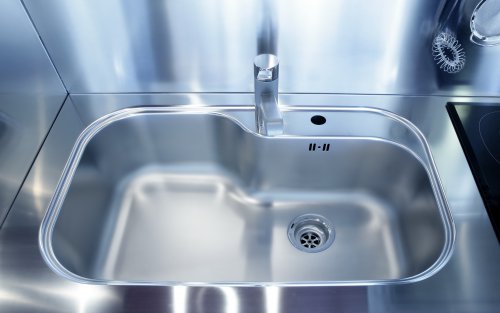
Here are some common rules that are useful for regular cleaning of stainless steel, regardless of the type of cleaning agent you use:
- Always scrub in the direction of the grain
- Use a microfibre cloth to prevent scratching
- Always use water and soap (or dish detergent) together with a microfiber cloth for standard regular washing
- Do not use any cleaner with a chlorine base or anything that contains chloride
- Do not use a cleaner for the oven
Stainless Steel Appliance Cleaning Don’ts
When cleaning stainless steel appliances, pay attention to the following:
- The excessively coarse qualities of powder, wire wool, ammonia, and bleach can easily scratch or discolour the appliance finish.
- Use a microfibre cloth to prevent scratching
- It’s highly recommended to review the manufacturer’s manual. Nobody knows a product better than the maker.
- Cleaning chemicals with abrasive properties will damage and dull the finish of stainless appliances, which can be easily scratched. Additionally, microscopic particles left by scrub brushes and wire wool may eventually rust.
Items for Stainless Steel Cleaning
To clean stainless steel appliances, keep the following:
- A large wash basin
- Water and dish soap
- Vinegar (white)
- Mineral oil
- A piece of soft cloth
- Spray bottle (if you want)
- Baking soda
How to Make the Steel Surface Shine
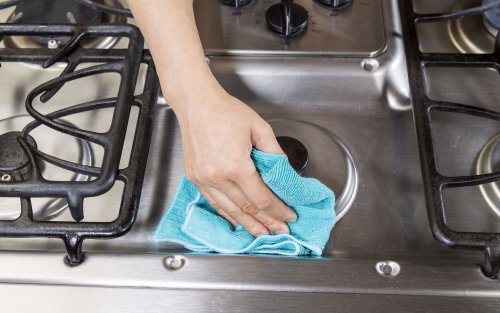
While scratch removal is often better to leave to the experts, small scratches can often be removed with a simple home remedy – apply a thin layer of toothpaste to the small scratches and buff gently with a toothbrush. This gets off superficial and small surface scratches.
If you want your appliance to shine, a neat trick would be to apply a few drops of olive oil before wiping your stainless-steel appliances down with a soft cloth. This gives it a great, deep shine that will complete your kitchen’s modern sleek look.
Stainless Steel Fingerprint Prevention
Once your stainless steel is clean, use wax to keep pesky fingerprints from coming back. After using a clean cloth or paper towel, apply the wax in a light coat and then buff to a shine with a clean microfiber cloth.
Cleaning a Stainless Steel Refrigerator
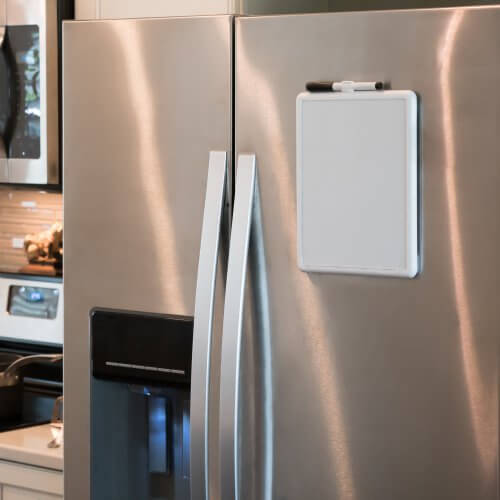
Using still water is the easiest way to clean your stainless steel fridge, but stubborn stains and fingerprints will require additional rubbing or a few drops of liquid soap. You will need to wash off the surface with clear, hot water before drying it with a paper towel if you use soap. Clean faster, so it doesn’t streak.
If you cannot cope with cleaning the fridge by yourself or there is not enough time, call eMop! Our cleaning professionals will clean your stainless steel appliances, using toxins-free cleaning supplies, and will give you the best tips for looking after them.
How to Clean a Stainless Steel Sink
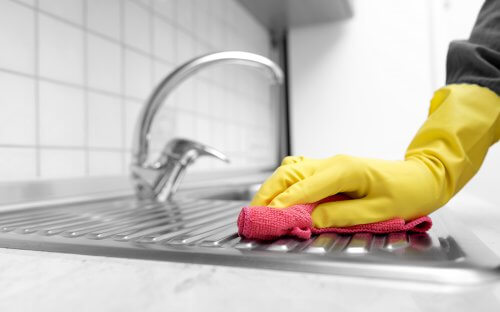
- Start by removing any food scraps and clean the drain out. Rinse the basin with the spray hose of your shower
- Sprinkle baking soda liberally over your sink’s entire surface, so it is coated in a thin layer. Make sure that it covers the sink walls
- Start buffing the sink with the baking soda using a soft sponge or cloth working in the direction of the stainless steel grain
- The baking soda serves as a slightly abrasive scrubbing agent, without scratching fragile stainless steel
- Take half a lemon
- Squeeze over the baking soda one half of the lemon. Then rub the cut side over the baking soda, with the other lemon half using the same circular buffing motion as above. The lemon can help deodorise the sink, while the surface of the stainless steel is cleaned by the baking soda
- When scrubbing is finished, pour white vinegar over baking soda, producing a chemical reaction that will have a lot of fizzing. Don’t worry, fizzing means you’re cleaning up! Pour just enough white vinegar to remove the baking soda, so on the way down, there is no chance that it will block your drain
- Rinse the drain thoroughly
How to Clean a Stainless Steel Stove
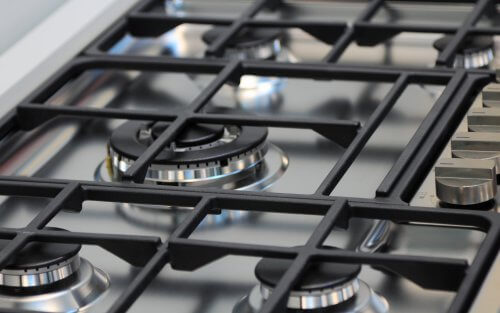
- Wipe the appliances in the grain direction. Get a slightly moist washing cloth and wipe your stove dry. Start at the top of your stove and work down as you scrub. Remember to clean in the direction of the grain. Vertical grains have to be washed vertically and horizontal grains – wiped horizontally.
- Apply a special harsh stain cleaner. Look for any harsh stains after givingyour stove an initial cleaning with your detergent solution. Use a special cleaner if there is any splattered food or oil on your stove
- Rinse the stove completely after applying cleaners. Dampen a clean washcloth in hot water. Run it over the stove until the water runs clear in the direction of the grain. Clean your stove immediately with a towel or cloth of paper
How to Clean a Stainless Steel Dishwasher
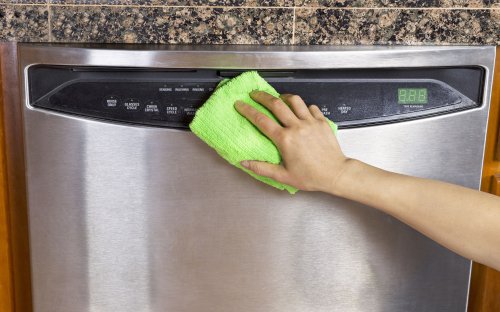
- To prevent clogging up and drain water from the dishwasher effectively, start the waste shredder before cleaning
- Use vinegar in the next wash cycle. Place the cup on the top shelf of the dishwasher and pour vinegar into it. Slide the shelf into the dishwasher and close the door. Turn on the dishwasher and start the washing cycle at the maximum water temperature.
- Start the wash with baking soda. After the first wash cycle, pour baking soda onto the bottom of the dishwasher. Start a short wash cycle at the maximum water temperature
- Do not use bleach to clean the stainless-steel dishwasher. No matter how strong stainless steel is, the use of bleach can lead to corrosion of the metal. Instead, take a softer detergent such as dishwasher detergent
How to Clean Stainless Steel Pots & Pans
Follow this process: use warm, soapy water and a ‘non-scratch’ scrubbing sponge to wipe your stainless steel cookware. Leave your stainless steel pots to cool in preparation for attempting to clean them. Don’t bleach them; it may damage them. This will help a great deal in cleaning stainless steel pans.
How to Polish Stainless Steel
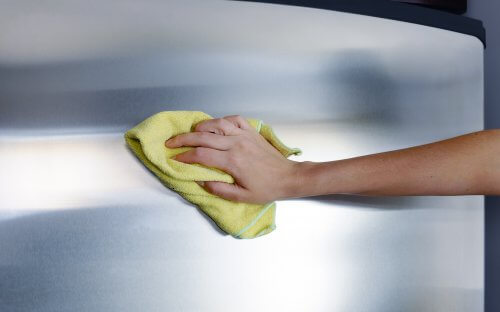
- Take vinegar. Some vinegar types may work better than others. White and cider vinegar work on stainless steel equally, but apple vinegar leaves a more natural smell
- Test the grain’s direction. There is a grain of stainless steel that runs either vertically or horizontally. Wiping the steel down in the direction of the grain can help you reach the small grooves where dust and grime can be trapped
- Spray the steel with vinegar liberally. Pour the vinegar into a spray bottle to coat the stainless-steel surface. Spray the vinegar over the item until the product is slightly coated in vinegar
- Clean the vinegar off in the direction of the grain, using either a soft cloth or paper towel. This will remove debris and restore its shine
Cleaning Tips & Best Homemade Remedies
As you can see, it is not necessary to use aggressive chemicals to clean stainless steel, let’s sum up some of the best homemade remedies.
How to Use Vinegar to Clean Stainless Steel
To remove any impurities from the stainless steel quickly and efficiently, it is enough to apply table vinegar to the sponge and then treat the metal surface with liquid. If the greasy spots are completely fresh, the process will go very quickly. In the case of old spots, mix vinegar with citric acid, then the cleansing effect will be even stronger.
Baking Soda and Stainless-Steel Cleaning
One of the easiest ways to clean stainless steel from greasy stains and food is ordinary baking soda. This tool is universal; it can be used to clean cutlery, pots, sinks, or stoves.
- To achieve maximum effect, first remove grease and food debris with a detergent, then wipe the dishes or surface dry with a paper towel.
- Sprinkle plenty of soda on stainless steel and leave it for several hours.
- Add a small amount of warm water so that the soda becomes more like a paste.
- Using a soft sponge, remove any residue from the surface of the stainless steel.
Dish Soap + Baby Oil
Dish soap is very suitable for washing dishes … and stainless-steel appliances! Surprisingly, this is actually so, with the help of ordinary soap you can remove even the stubbornest dirt.
- Pre-wet the rag with water and apply a small amount of soap to the rag
- Wipe along the texture lines of your appliance. When finished cleaning, wipe the surface with a dry towel
- This is a very important part of cleaning, after polishing with oil, the surface will look shiny, but, most importantly, the oil prevents dirt from sticking, and subsequent cleaning will be even easier. Apply a small amount of baby oil to a second rag. A couple of drops will be more than enough!
Cleaning Stainless Steel with Water and a Cloth
You will need to invest in some microfibre cloths to make your stainless steel appliances shine like new. Such super-soft, non-abrasive clothes will last you a long time. If you get some of these clothes, you can use only water to wash your appliances.
How to Use Glass Cleaner to Remove Fingerprints
You can use a glass cleaner for cleaning fingerprints.
- Spray the cleaner on a microfibre. You can spray on the stainless steel directly, but this can cause drops, and the cleaner can be wasted
- Gently clean the area in a circular motion to avoid stains and fingerprints. Repeat as necessary
- Thoroughly rinse, then clean the metal finish with a towel
How to Clean Stainless Steel Appliances with WD-40
If you want to wash the surfaces of stainless steel quickly and leave them with a good protective coat, use WD-40.WD-40 is a petroleum-based product; you need to remember this, so you don’t use it on anything in the kitchen without thoroughly washing it afterward.
Ways to Keep Your Stainless Steel Clean Longer
Stainless steel requires little elbow grease to maintain. You can maintain the new look and lifespan of your stainless steel kitchen appliances by carrying out regular maintenance.
- Put a little shine on it
- Apply a paste for polishing
- Do not use harsh cleaning substances or tools
Apply a tiny droplet of olive oil onto the stainless steel appliance’s exterior. Use a dry towel, and remove any remaining material to leave the exterior spotless and free of fingerprints. It will appear glossy for a longer period of time, but the surface shouldn’t feel greasy.
Another method to make stainless steel appliances shine is to apply pastes that are supplied commercially. They leave behind a thin layer of tiny wax that is easy to remove and can endure for a long period of time.
Be careful to stay away from highly coarse cleaning agents, steel wool, metal brushes, and sandpaper. Soft abrasives may be effective in certain situations. For the best possible finish, proceed with the direction of the steel’s surface grain or polish when scrubbing with coarse tools.
Commercial Stainless-Steel Cleaners
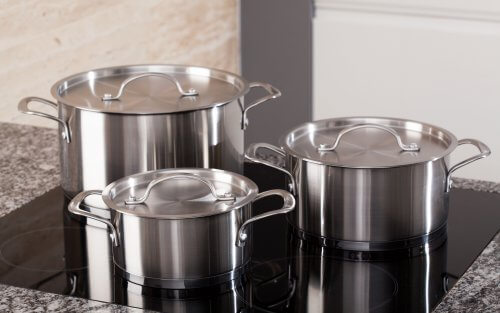
Here are some useful commercial cleaners to help you with the cleaning of your stainless steel appliances:
- Noble QuickSan: sanitiser that does not harm stainless steel and is suitable for sanitising work tables
- 3M 2000: a scratchless pad that helps to remove rust
- Spiffy Shine: a polish that removes any corrosive elements on the stainless steel and allows the protective layer to be restored
In addition, let’s say, it’s always better to call professionals when it comes to the quality of your cleaning. That’s why eMop cleaning crew is always ready to help you! We provide the best cleaning service possible, taking care of any tiny scratches, so your home and stainless steel appliances will look fresh and sparkling. Get your first domestic cleaning with eMop and save time and money, while enjoying the best cleaning results you can get!
FAQs
What is the best thing to clean stainless steel with?
Stainless steel can be wiped with a soft dish soap mixed with warm water and a paper towel. For more tenacious stains, baking soda or white vinegar are effective treatments. After using a stainless steel cleaner, always dry the exterior to prevent damp marks.
How do you make stainless steel look new again?
If you want to give your stainless steel a new look, dab a small amount of olive oil on a clean microfiber cloth and rub it in circular motion against the grain. Use a dry cloth to remove any remaining oil.
What is the leading home remedy to clean stainless steel?
As a homemade agent for stainless steel, combining olive oil and vinegar is quite effective. After cleaning and disinfecting the entire surface with ethanoic acid, use olive oil for polishing and protecting to guarantee a gloss free of dirt elements. Also, you can contact commercial stainless steel cleaners for help.
What things shouldn’t be applied to stainless steel?
- Harsh cleaning elements
- Steel wool
- Bleach
- Sodium chloride elements
- Oven cleaners
- Scouring powder
What restores the shine to stainless steel?
Mix water with a little bit of vinegar. Then wait five minutes after applying the mixture to the stainless steel surfaces. After clearing, use cool water or a damp cloth to clean properly. Apply a little quantity of olive oil on stainless steel exteriors. Use a dry microfiber cloth to wipe everything clean and dry.

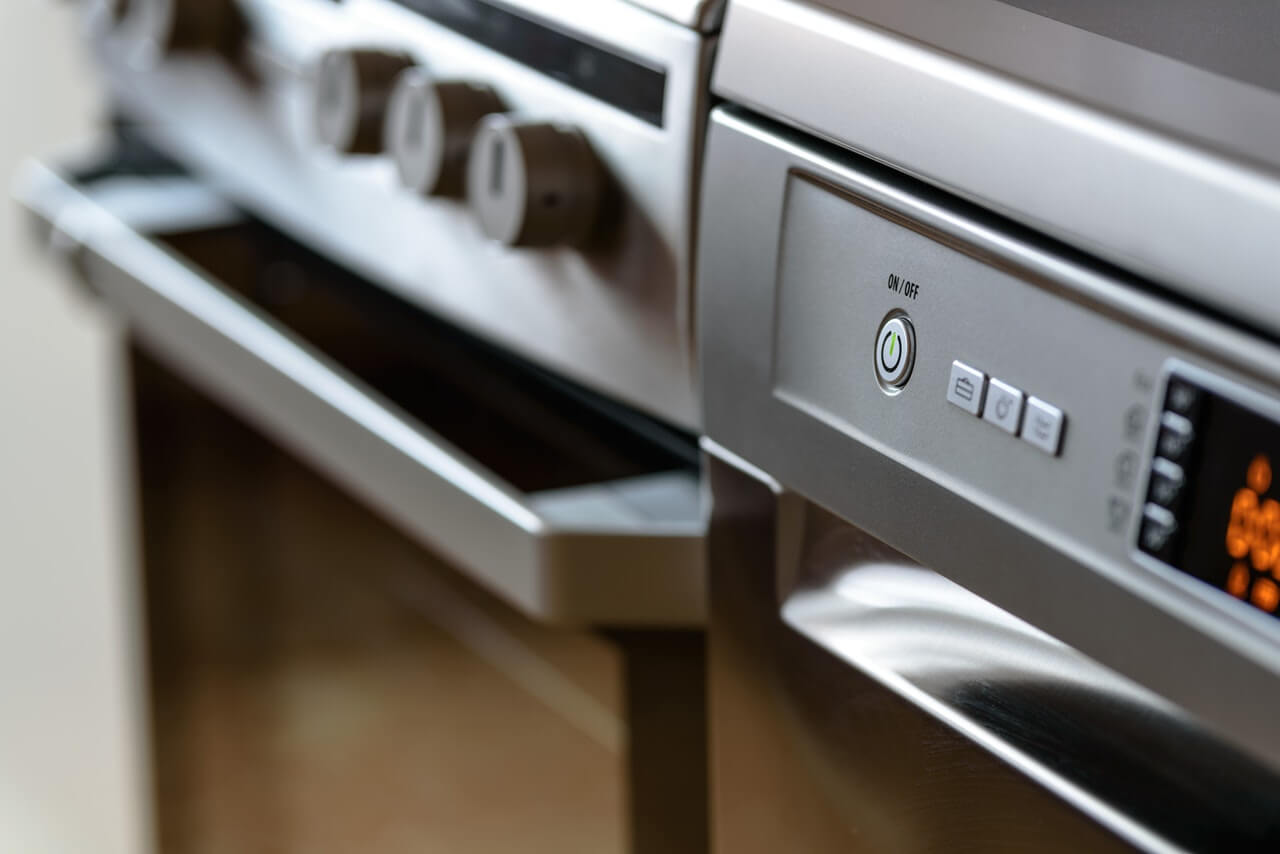


 Blog
Blog
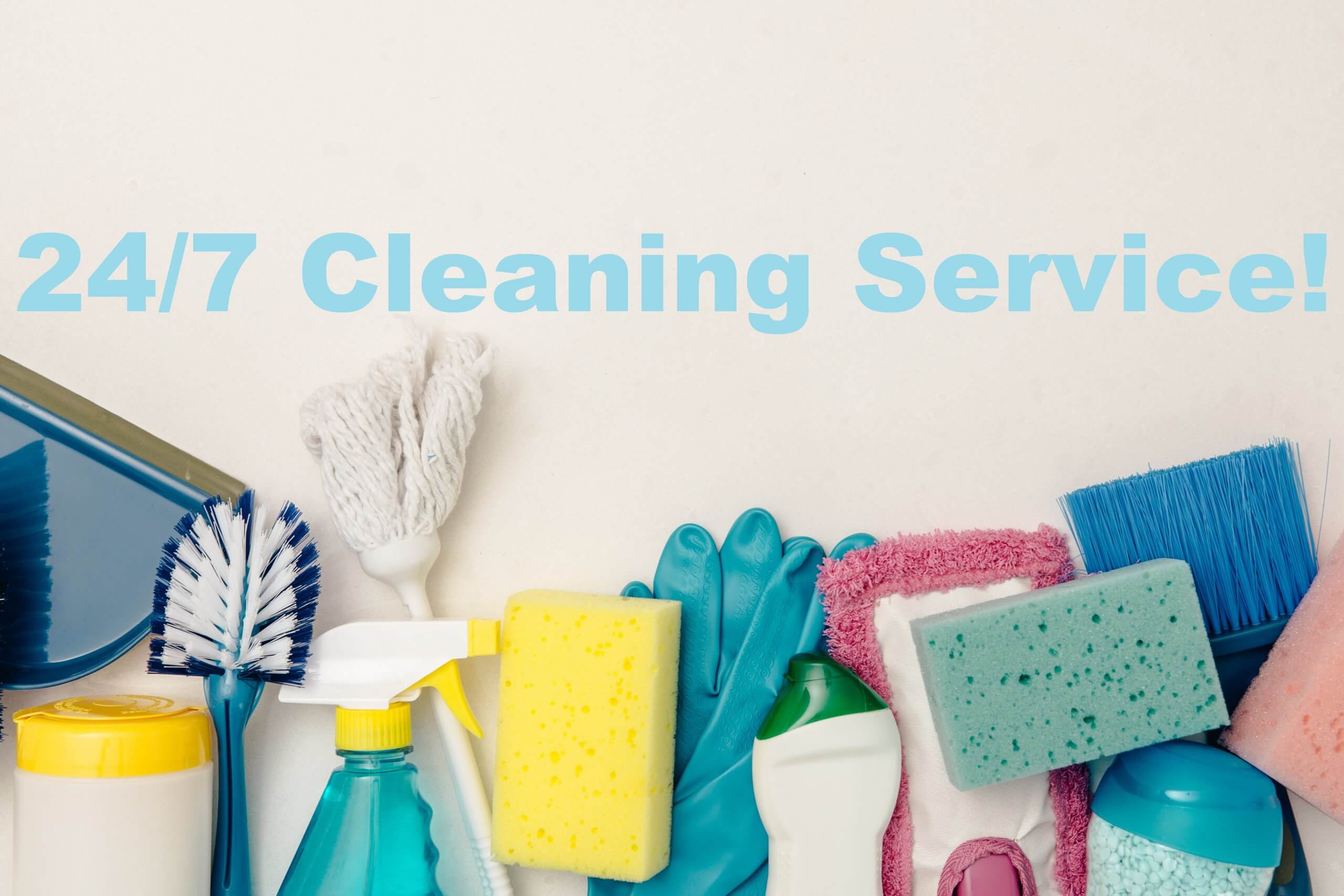
 Previous Post
Previous Post